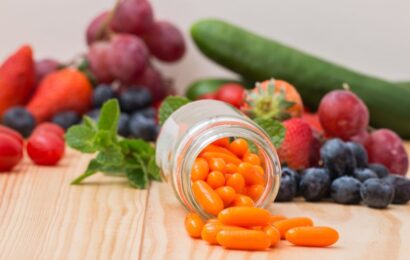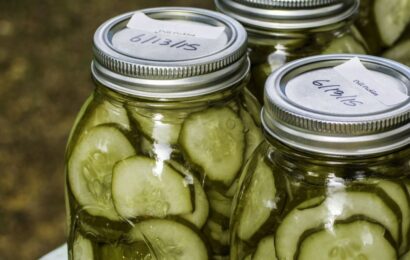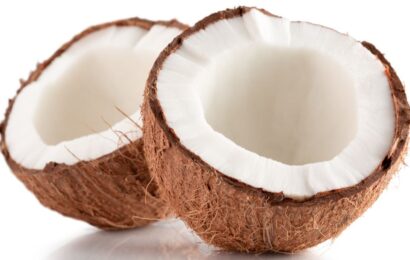While the general consensus is that people with diabetes can eat anything (it’s matter of how much, when, and maybe, what you pair it with), there’s still some confusion around certain foods. Dates happen to be one of these foods. They’re super sweet, which is maybe why people with diabetes hesitate to munch on them. But are they really off limits? And what exactly are dates, anyway? Read on to find out!
What are dates?
Many of us think of dates as being baked into a quick bread (e.g., date nut bread). Some people enjoy eating stuffed dates, or simply eating a date “as is.”
Dates are a stone fruit, which means that they have a pit or a “stone” in their center, surrounded by a fleshy, edible outer area. Other stone fruits include peaches, plums, nectarines, apricots, and mangoes. Once a date is pitted, it’s ripe for just about anything: bread, cakes, cookies, and salads, to name a few.
To get cutting-edge diabetes news, strategies for blood glucose management, nutrition tips, healthy recipes, and more delivered straight to your inbox, sign up for our free newsletters!
Many cultures regularly include dates in their diets. For example, in North Africa and the Middle East, dates, other dried fruits, and nuts are always served at mealtimes. During Ramadan, when Muslims around the word fast from sunrise to sunset, the fast is often broken by eating an evening meal (iftar) that features dates. In Mexico, dates are used frequently in sauces and moles.
What’s the history of dates?
Dates grow in huge clusters on big trees called date palms, which are native to the Middle East and North Africa. These date clusters are usually between 65 and 85 feet up in the air, and they are often hand harvested (which certainly creates a safety hazard when it comes to picking them!). It’s thought that dates have been consumed for about 7,000 years, and dates have been a key source of nutrition and energy for Middle Eastern sailors and traders over the centuries. Dates are mentioned in the Bible, and during biblical times, they were eaten fresh or dried, and often boiled into a thick syrup called “date honey” for use as a sweetener. (Today, you can purchase both date syrup and date sugar).
Thanks to trading, dates were introduced across the world, to Southwest Asia, Northern Africa, and Spain. According to World Atlas, dates were brought to Mexico, California, and South America during the Spanish conquests.
In this day and age, Egypt is the leader in date cultivation and production, followed by Iran, and then Saudi Arabia. In the U.S., Southern California produces the largest amount of dates, followed by Arizona. Other states, including Nevada, Utah, Texas, and Florida, grow dates, as well.
What are the different varieties of dates?
A date is a date, right? Well, not exactly. There are many different varieties of dates. While most types of dates are sweet, they can vary in size, shape, color, pulp texture, and yes, sweetness. Here are a few of the most common varieties of dates:
Medjool
These are large (usually about 3 to 4 inches long) and plump, and have a deep red color, soft skin, and a rich flavor. Medjools are also quite moist.
Deglet Noor
Another common type of date, Deglets are not as sweet as Medjools. They have a slightly nutty flavor and they’re great for snacking, according to the website Epicurious. Deglets hold their texture during cooking.
Barhi
These dates are very soft and very sweet, so they taste like candy. Barhi dates are also quite fragile. They’re not always easy to find in stores, but if you live in California, you may find them during late summer or early fall.
Halawi (Halawy)
Smaller in size, Halawi (which means “sweet”) are, well, sweet and have a honey-like flavor. Halawi dates have a golden-brown skin and look more wrinkled than other date varieties.
Date nutrition
Both fresh and dried dates are available. “Fresh” dates are usually dried a little bit before they are harvested so that they last longer, according to The Spruce Eats. These are the fresh dates that you might find at, say a farmers market or in specialty food stores. Fresh dates have a higher sugar content than the dried varieties that you typically find in your local grocery store.
While dates may seem like an “empty calorie” fruit due to their sugar content, they actually contain a decent amount of nutrients, such as B vitamins, vitamin K, calcium, iron, zinc, and magnesium. Also, dates contain antioxidants, and they’re a good source of fiber, as well.
However, as delicious as dates are, you still need to keep an eye on the amount that you eat. Let’s look at the nutrient content of two different varieties of dates.
Medjool dates
One date contains:
- 66 calories
- 0 grams of fat
- 18 grams of carbohydrate
- 2 grams of fiber
- 0.4 grams of protein
- 0 milligrams of sodium
Deglet Noor dates
Three dates contain:
- 60 calories
- 0 grams of fat
- 16 grams of carbohydrate
- 2 grams of fiber
- 0.5 grams of protein
- 0 milligrams of sodium
Can you eat dates if you have diabetes?
In short, yes, you can. But, keep in mind that they contain carbohydrate and need to be counted as such in your eating plan.
On the plus side, dates contain fiber, which can help slow the absorption of carbohydrate into the blood stream, and help to limit blood sugar spikes. Dates have a low glycemic index, ranging from 44 and 53, which means that, when eaten in moderation, they’re less likely to cause blood sugar fluctuations compared with high-glycemic index carb foods.
Tips for eating dates
If you have never eaten a date or are looking for healthy ways to enjoy them, consider these ideas:
- Eat dates as a snack, along with a small handful of nuts, or a couple of slices of cheese. The fat and the protein in the nuts or cheese will help balance out the carb from the dates.
- Chop up a few dates and add them to your salad or sprinkle them on your morning oatmeal or yogurt.
- If you like smoothies, cut up a date and throw them in the blender.
- Stuff dates with a bit of cream cheese, a nut, or your favorite nut butter. Of course, remove the pit first!
Want to learn more about eating well? Read “Strategies for Healthy Eating,” “Improving Your Recipes: One Step at a Time,” and “Easy Ways to Eat Better.”





